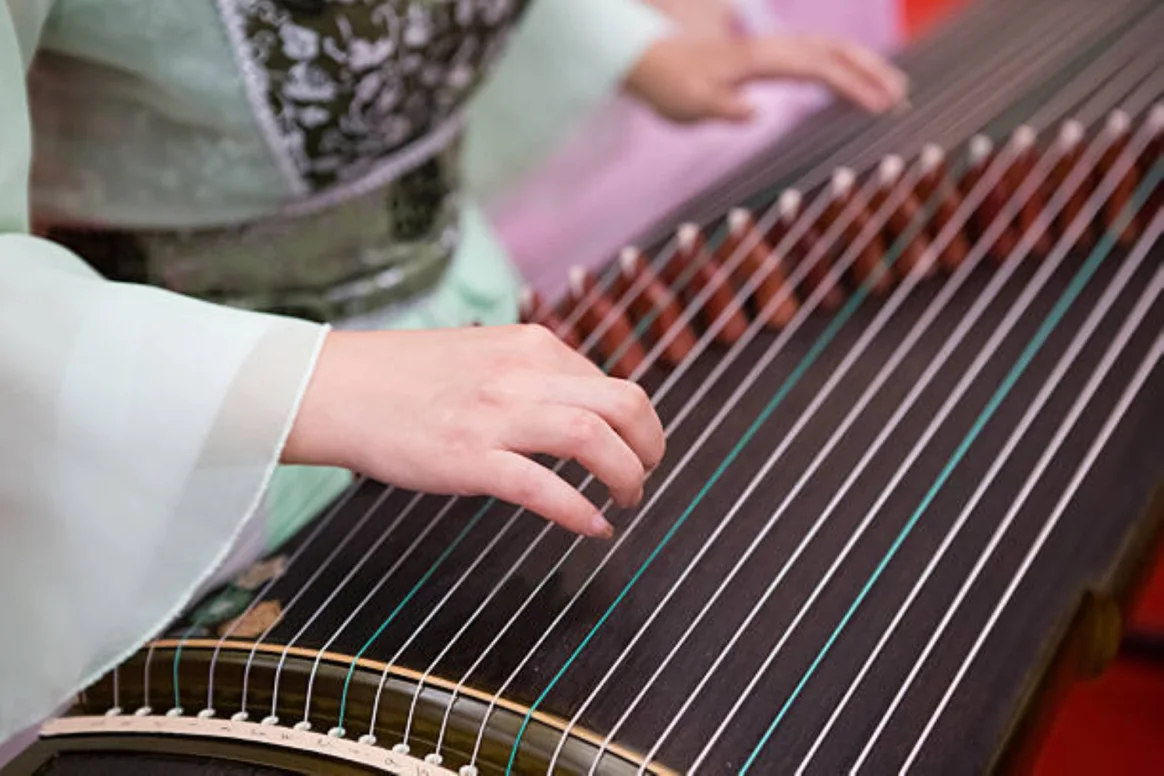The National Museum in Riyadh is highlighting the evolution of Chinese music over thousands of years through new events under the theme “Voice of Harmony: A Journey Through Ancient Chinese Music.” This is showcased through more than 100 rare musical artifacts, including bone flutes and bronze bells.
It focuses on multiple aspects of the richness of the Chinese musical experience
The exhibition features five main sections: “Harmony with Heaven and Earth,” “Echoes from Stone and Bronze,” “Melodies Exchanged Between Regions and Strangers,” “A Tribute to Chinese Musical Heritage,” and “Mountains, Waters, and Wind in the Forest.”
These sections explore various facets of the richness of Chinese musical experience, from the earliest instruments created by humans to communicate with nature, through music’s role in rituals and social systems, to its interaction with neighboring cultures and its reflection in both official and folk musical heritage.
The exhibition also presents archaeological artifacts and a comprehensive vision of the philosophical and spiritual role of music in Chinese civilization, regarded as a language for meditation and human communication, and shared values that transcend the boundaries of time and place.
National Museum in Riyadh
The National Museum of Riyadh is a major cultural institution in Saudi Arabia, opened in 1999 as part of the King Abdulaziz Historical Center. It chronicles the history of the Arabian Peninsula through eight extensive galleries, covering prehistory, the pre-Islamic era, the rise and spread of Islam, and the unification of the modern Saudi state. The museum serves as a key repository for the nation’s heritage and archaeological treasures.
bone flutes
Bone flutes are among the world’s oldest known musical instruments, with the most famous examples being over 40,000-year-old flutes discovered in Germany, crafted from the bones of vultures and mammoths. These artifacts provide crucial evidence that early modern humans in Europe had already developed a sophisticated musical tradition. Their discovery fundamentally altered our understanding of the cultural and cognitive capabilities of Paleolithic peoples.
bronze bells
Bronze bells have a long history across many cultures, dating back thousands of years to ancient civilizations in China, Mesopotamia, and Europe. They were often used in religious ceremonies, royal courts, and as musical instruments due to their resonant sound. These artifacts are significant for their craftsmanship and for providing insights into the metallurgical skills and cultural practices of their time.
Harmony with Heaven and Earth
“Harmony with Heaven and Earth” is the central altar of the Temple of Heaven complex in Beijing, China. Constructed in 1420 during the Ming Dynasty, it was the primary site where emperors performed ceremonies to pray for good harvests. Its three-tiered circular marble design reflects the ancient Chinese belief in a round heaven and square earth, symbolizing the connection between the divine and mortal realms.
Echoes from Stone and Bronze
“Echoes from Stone and Bronze” is not a specific, widely recognized historical site, but rather an evocative name that suggests a location or museum exhibit focused on prehistoric archaeology. It would likely explore the history and artifacts from the Stone Age and Bronze Age, showcasing how early human societies evolved in their use of technology and materials. The name implies a journey through the remnants of these ancient eras, from the first stone tools to the revolutionary development of metalworking.
Melodies Exchanged Between Regions and Strangers
“Melodies Exchanged Between Regions and Strangers” is not a specific physical place but a conceptual cultural theme, often explored through events like music festivals or cultural exchange programs. Historically, such initiatives have used music as a universal language to bridge gaps between different communities and travelers, fostering understanding and shared experiences. These exchanges highlight how melodies and songs have historically traveled along trade routes and through migrant communities, evolving and creating new, hybrid musical traditions.
A Tribute to Chinese Musical Heritage
“A Tribute to Chinese Musical Heritage” is a cultural institution or exhibition dedicated to preserving and showcasing China’s rich musical history. It highlights ancient instruments like the guqin and pipa, tracing their evolution over thousands of years. The site serves to educate visitors on how traditional Chinese music reflects the nation’s philosophical, literary, and social traditions.
Mountains, Waters, and Wind in the Forest
“Mountains, Waters, and Wind in the Forest” is a traditional Korean landscape painting, or *sansuhwa*, by the esteemed 18th-century artist Jeong Seon. It exemplifies the *jingyeong sansu* (“true-view”) style, which broke from idealized Chinese conventions to depict real Korean scenery with a more direct and realistic approach. The painting captures the serene and majestic essence of Korea’s natural landscapes, celebrating its mountains, forests, and flowing waters.






